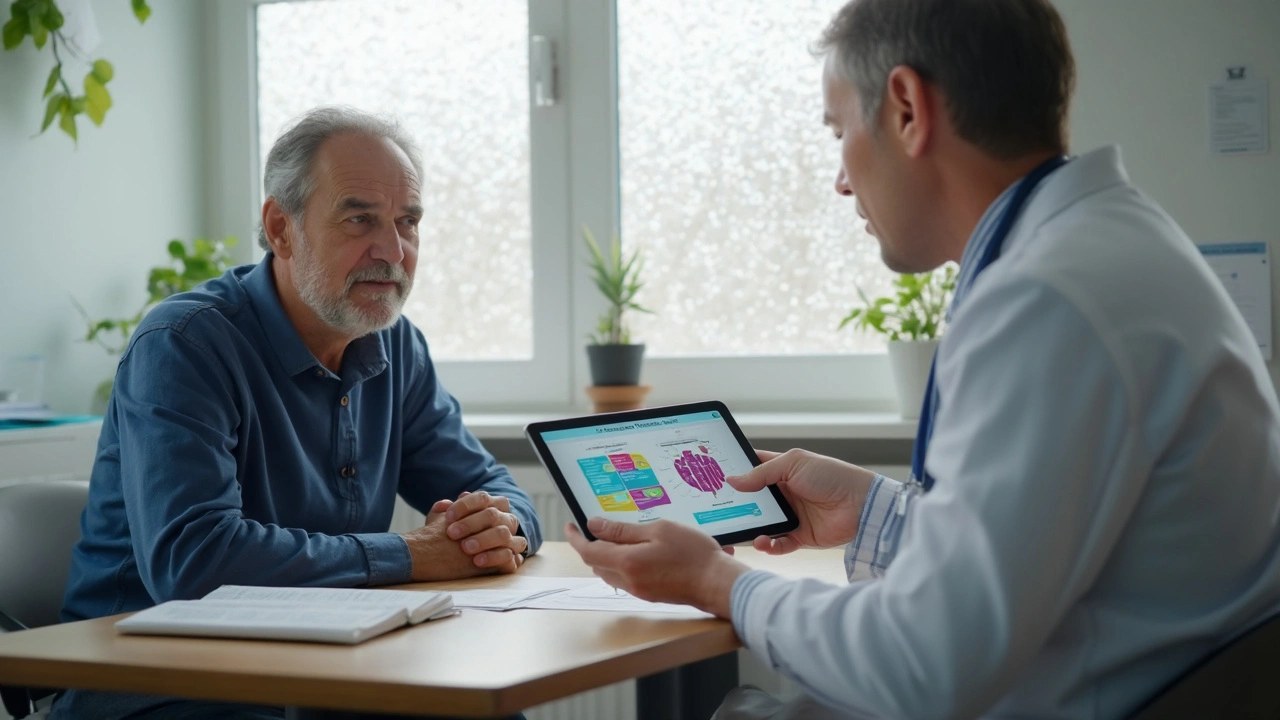Diabetes treatments: clear options and simple steps you can use today
Want to feel more in control of your blood sugar? Diabetes care isn't one-size-fits-all. Some people manage type 2 diabetes with diet and exercise alone. Others need pills, injections, or a mix of approaches. Below I break down the common options and give real-world tips you can use.
Core treatment types
Lifestyle first: eating less processed food, choosing higher-fiber carbs, losing a bit of weight and walking daily all lower blood sugar and often reduce medication needs. If lifestyle changes aren’t enough, medicines help.
Oral meds: Metformin is the usual first drug. It lowers glucose production in the liver and is generic and affordable. Other pill classes include sulfonylureas (can cause low blood sugar), DPP‑4 inhibitors (gentle effect) and SGLT2 inhibitors (help the kidneys remove extra sugar; can also help with weight and heart health).
Injectables and insulin: GLP‑1 receptor agonists (like semaglutide) are injectable drugs that lower glucose and often help with weight loss. Insulin is the most powerful option and necessary for some people with type 1 or long-standing type 2 diabetes. Insulins come in fast-acting, short, and long-acting forms — your care team will pick the right mix.
Practical tips for daily management
Timing matters. Take metformin with food to reduce stomach upset. If you’re on insulin, learn dosing with meals and how to count carbs. Rotate injection sites to avoid lumps and store insulin in the fridge until opened.
Watch for side effects. SGLT2s can increase the risk of genital infections; GLP‑1s may cause nausea at first. Sulfonylureas and insulin can cause hypoglycemia — know the signs (shaky, sweaty, confused) and carry quick carbs like glucose tablets or juice.
Set realistic targets. A1C goals vary by age, health and risk of low blood sugar. Many people aim for about 7% but talk with your clinician to find a goal that fits you.
Combine safely. Many effective regimens mix lifestyle, one or two oral drugs and sometimes a GLP‑1 or insulin. Your provider will consider kidney function, heart health, weight goals and cost when choosing drugs.
Affordability tips: metformin and older insulins are often cheap. Ask your pharmacist about generics, manufacturer savings cards, or community programs. If medication cost is blocking care, your team may have cheaper alternatives that work well.
Know when to call: severe high blood sugar with nausea/vomiting, signs of diabetic ketoacidosis (fast breathing, fruity breath), or repeated hypoglycemia need urgent care. For routine changes, schedule a review every 3–6 months.
Want help making a plan? Start with one small change: a 20-minute walk after dinner or swapping a soda for water. These steps add up and make medications work better. Talk with your doctor or pharmacist about options that fit your life and budget.
Cutting-Edge Diabetes Treatments for 2025: SGLT2 Inhibitors, GLP-1 Agonists, and New Alternatives to Metformin

Discover the latest breakthroughs in diabetes management for 2025, as this article explores advanced treatments like SGLT2 inhibitors, GLP-1 agonists, and novel alternatives to metformin. Dive into how these new options change the approach to glycemic control, weaving in the most up-to-date research, practical tips, and real-world facts. The article breaks down mechanisms, pros and cons, and how these drugs are reshaping lives. Readers get the details they need to talk with their doctors and stay ahead in diabetes care. Whether you’re managing diabetes or interested in new therapies, here’s what every patient and caregiver should know.
- April 25 2025
- Tony Newman
- 19 Comments
